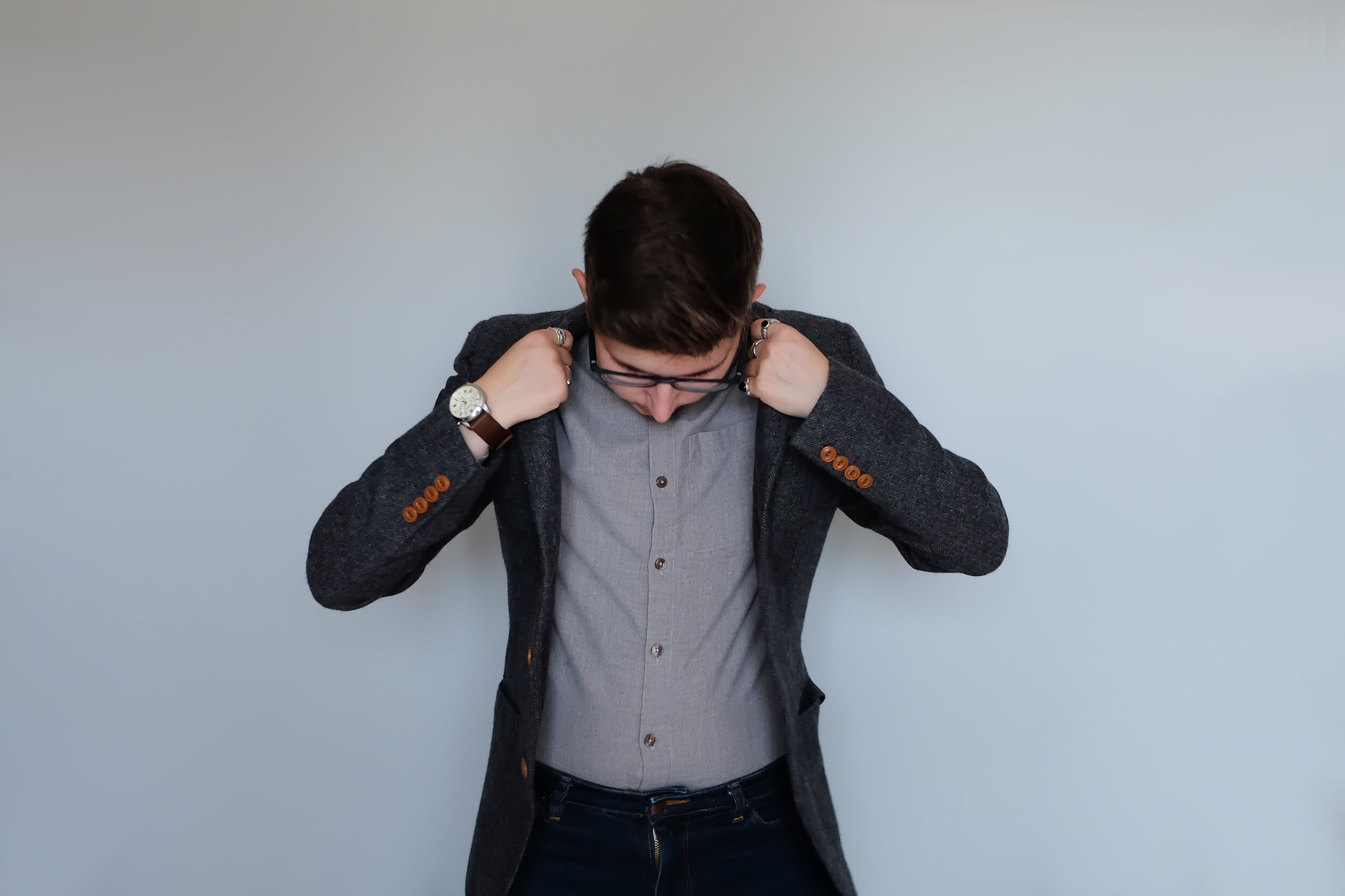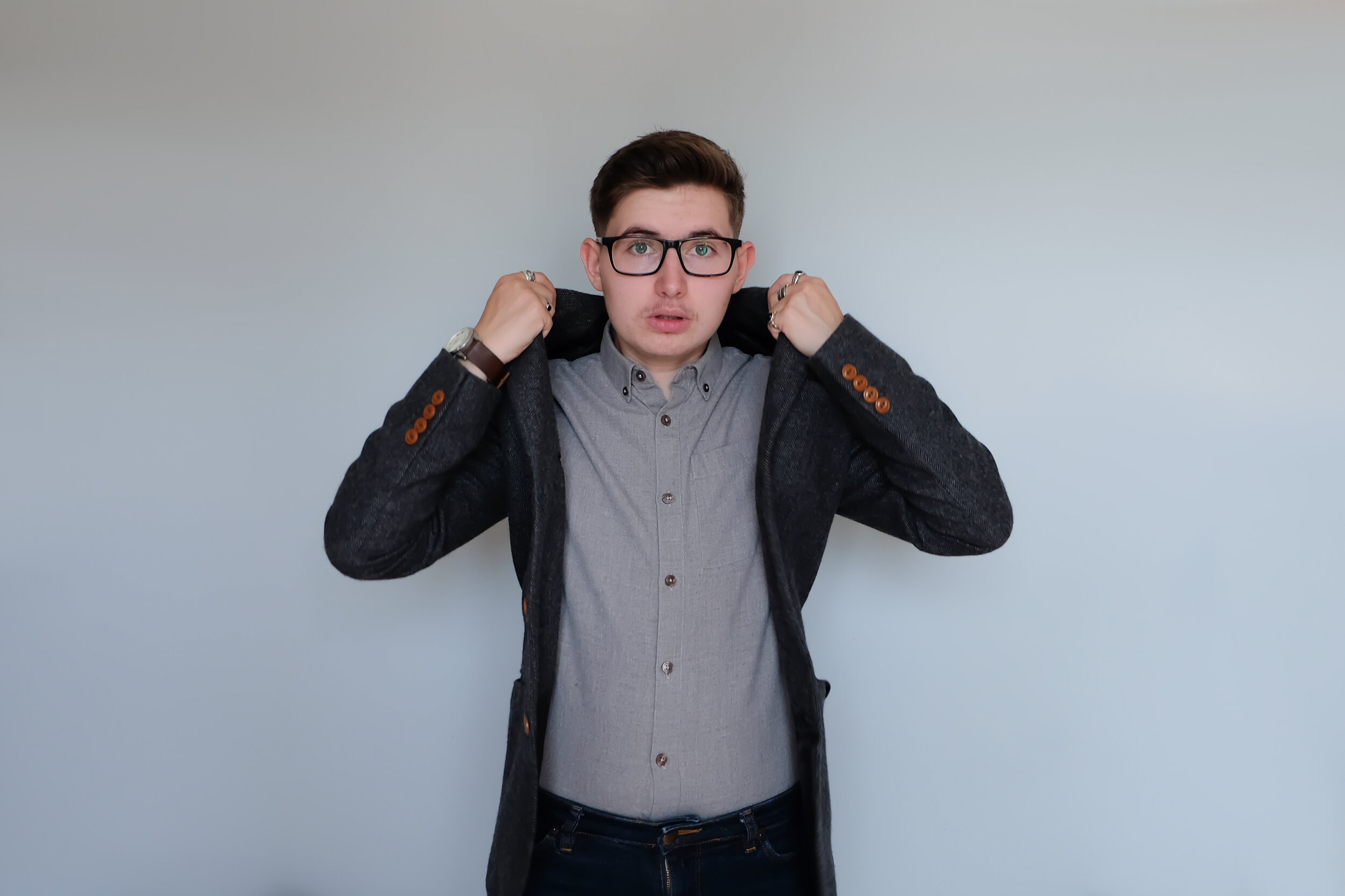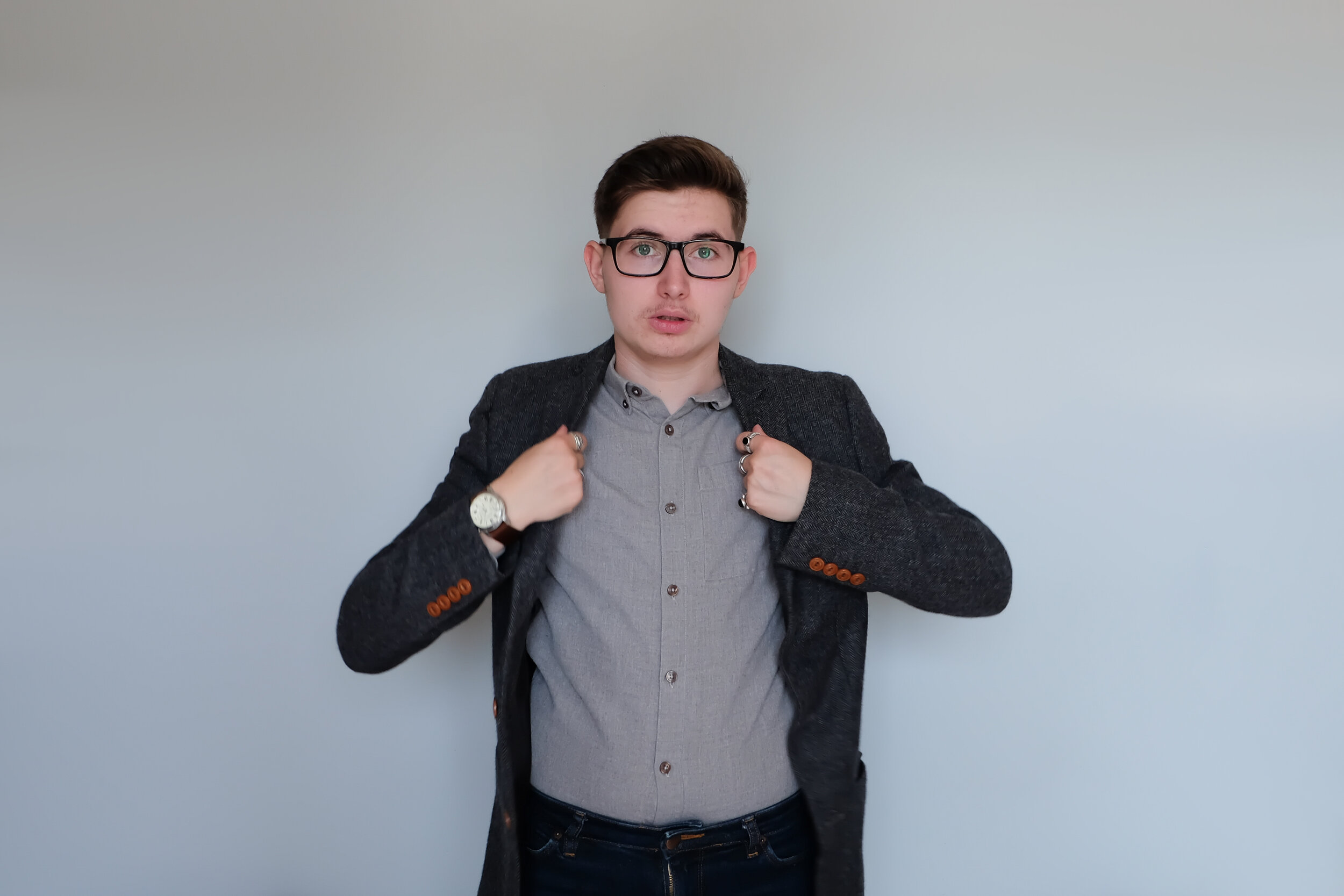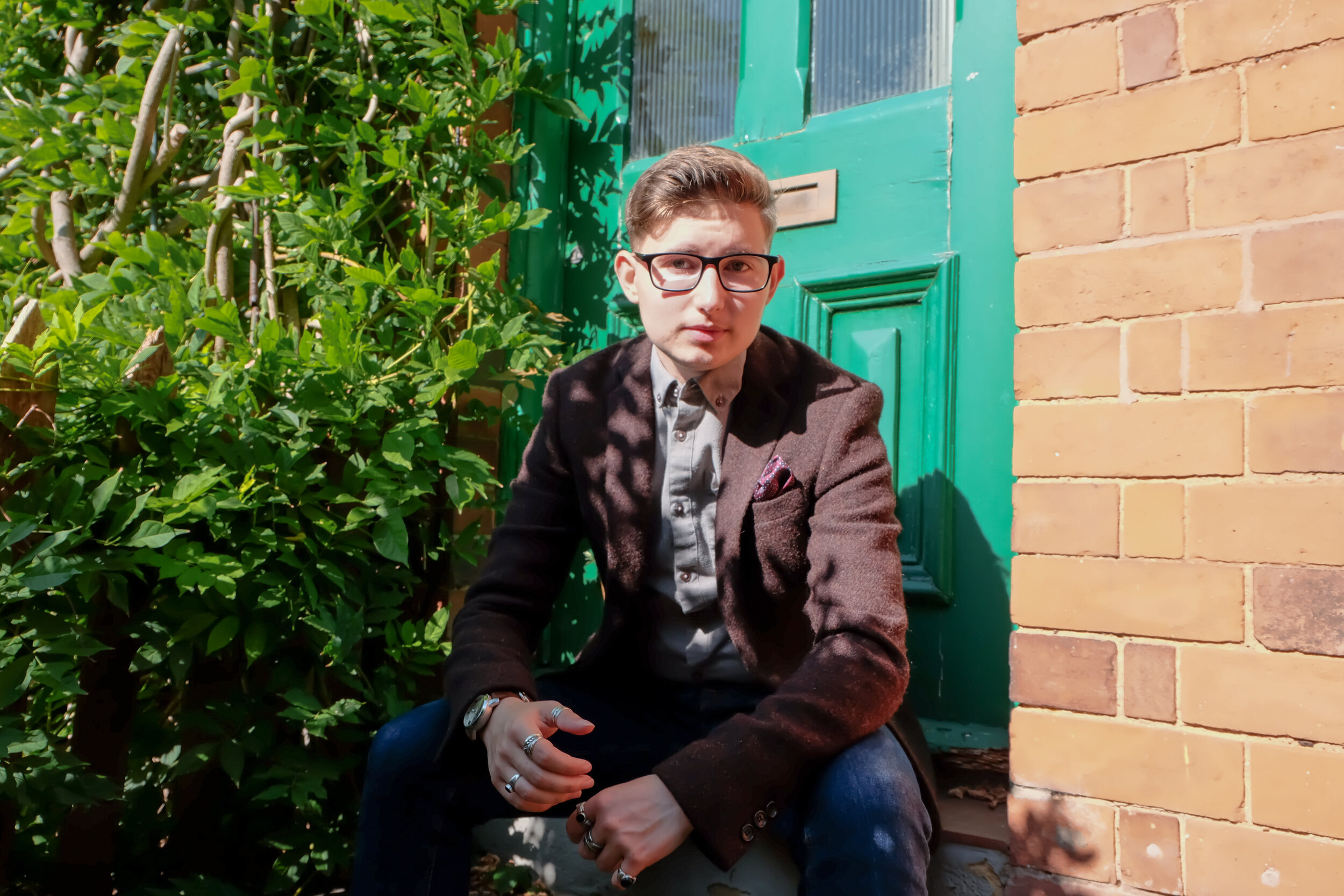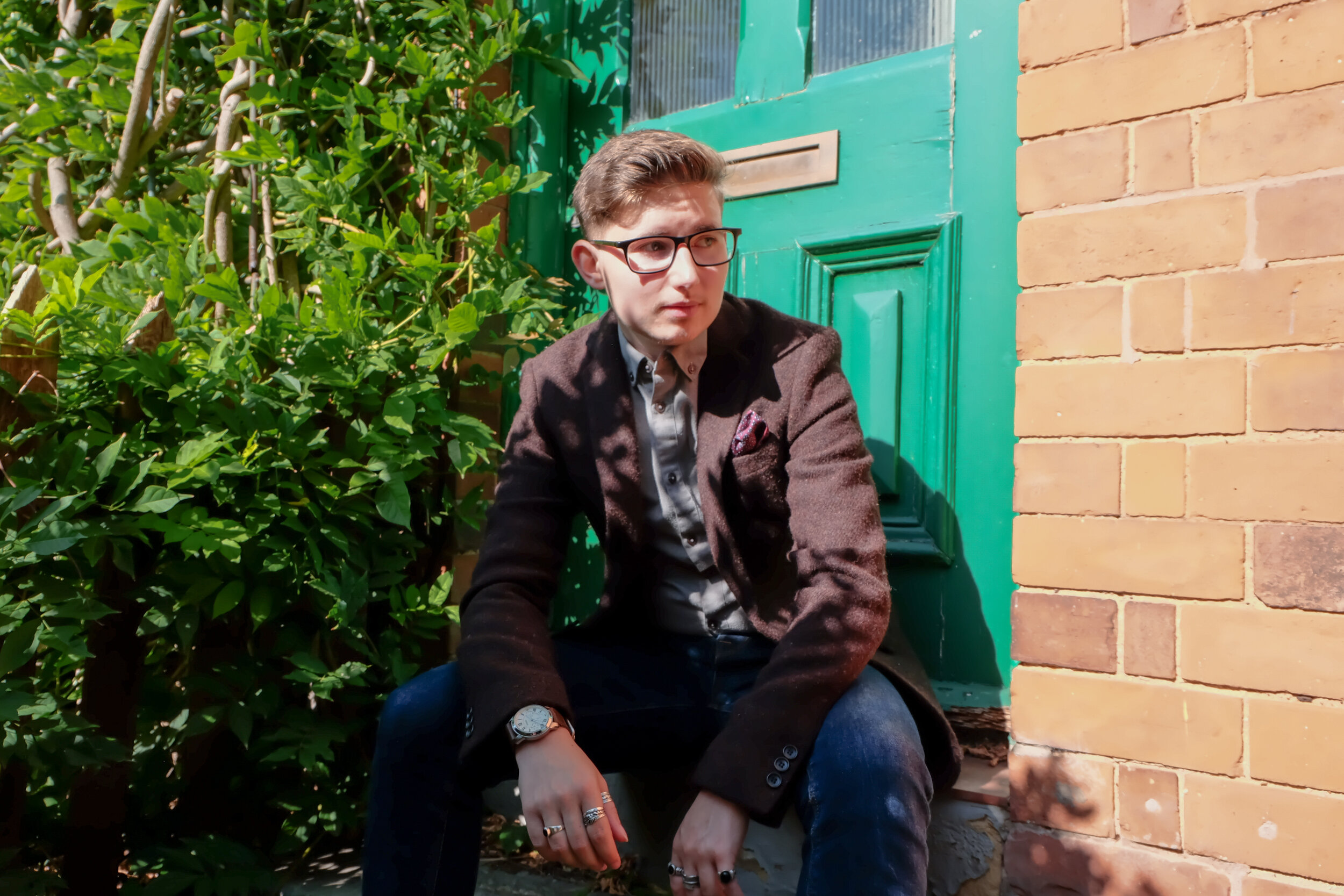What Clothes Say
I talk a lot about clothes, and people often seem surprised, but to me, clothes are incredibly important. Clothes are how we show the world who we are, clothes are the most powerful tool we have when it comes to defining what strangers think of us upon a first meeting. To paraphrase Nigel, from The Devil Wears Prada; Clothes are the art we wear every day.
I often get asked by my friends to help them out, wardrobe-wise - and I love it, because when you help someone find the clothes they love, the clothes that are able to articulate to the world what they want it to know about them, you can see them grow in confidence, and in personality. My biggest success story is actually one of my oldest friends. When we were in high school together we didn’t have a uniform, and he - kind and courteous, and generous, as he was, was falling into the 4chan trap so many nerdy teenage boys fall into - he saw no worth in himself, and was told, repeatedly, by people online, that nobody would ever see any worth in him, so he put no effort into his appearance, creating a self fulfilling prophecy. I finally had enough, and, with his mother’s blessing, dragged him into town.
The thing with starting out where we did, was that we were starting at the bottom, he’d never bought clothes for himself, and so had no idea what it was he wanted them to say - and that’s fine, and understandable, but it means I had to be so careful not to push my own self onto him. With that in mind, we started with my three rules, which are very simple: Fit, Fashion, and Feel good factor.
Fit: The clothes you wear have to fit - so many people wear things that are many sizes too big. I cannot believe the amount of times I’ve had to inform amazed people that unless it’s specifically oversized or has a dropped shoulder, the shoulder seam of your clothes should sit at your shoulder.
Fashion: The least important of the three rules, and the most flexible - your clothes must be fashionable - but “fashionable” just means you think it looks good, not the wider world.
Feel good factor: The most important of my rules - you have to feel good in the clothes. If you don’t feel comfortable or confident, you won’t look it - who cares if it’s “in”, if it’s not you, don’t wear it.
Because he’d never gone outside of the t-shirts and jeans his mum had bought him, we just took that, and made it nice. He wanted a muted colour palette, because that’s what he was used to. We picked up a few t-shirts, grey, black, navy, burgundy, dark green - they were plain, simple, would go with everything, were extremely cheap - but, most importantly, they were also in his size.
Then we got some plain, undistressed, very dark blue slim fit jeans. These are, in my opinion, an absolute wardrobe necessity. They can be dressed up to look formal, dressed down to look casual and go with almost every outfit - they’re the blank canvas of a wardrobe, and so familiar to everyone, because they’re still just jeans.
He loved Top Gun, so he saved up for a dark brown leather jacket, and got some boots, (and a new haircut, that he picked) and he was sorted.
Years later, he messaged me - he’d worked out what he wanted to tell the world (and yes, it can take years to work it out, in fact, it normally does), so we went back into town. This time, I was just there as a second set of eyes, because during the first round, I’d worked to empower him. I told him why things worked, and why they didn’t - how textures and colours work to say things about us - this time he was prepared.
He wanted to be a soft pastel boi - the complete opposite of my look, but a real reflection of who he really is. We got colourful pastel t-shirts, and soft pink and blue jeans, white and pastel short sleeve shirts in a nice open weave, to wear open over the t-shirts, or buttoned up to work. Everything worked with everything else, so no effort was really required in the mornings. He even got some simple white trainers and pastel socks. He was finally showing the world who he was, and the grin on his face said it all.
I think, as a trans person, I think more about what the world sees when it looks at me, but that means I’ve studied it. I give my advice as freely as I can, but that’s just in person, and twitter has made many requests for advice, so I’m going to try and type up exactly what I do to create my own look, and why.
What I want the world to see, when it looks at me, is something very specific. I want them to see a history professor, who always rushes into his own lectures a few minutes late, and always stops a stressed looking student on the way out, just to quietly check they’re okay. That combination of fusty academia, chaotic energy, eccentricity, informal formality, and kindness. That’s where I live.
I think I succeed in it too...
But how?
Mostly, I utilise something often overlooked in clothes - but which I personally think is the most important part: Texture.
Example Jacket Texture
Example Shirt Texture
Smooth, close-woven, shiny clothes generally give off a far more formal vibe - back in the past, people all wore what we would think of as quite formal clothes all day long, and so the rich would set themselves aside from the poor by not just the detailing and construction quality of their clothes, but by the fabrics they were made of. Close-woven, smooth fabrics, like very fine wool and silk, were the preserve of the rich. That idea has carried through to today, but the prevalence of cheap smooth fabrics for shirts and suits and such has begun to undermine the original look, and now, unless you’re every careful, they can look tacky.
Rougher clothes, with obvious textures, and slight colour and tone changes, are generally seen as far more informal - because of all the reasons stated above. Even tweed, which is seen as something the rich, such as landed gentry, would wear, is actually an informal fabric, originally supposed to be worn only in the country.
So, with textures in mind, let’s start with the jeans - as I said before, very very dark blue slim fit jeans are my go-to clothing item. I have a number of pairs, as they fade too much, they get cycled out, and I only wear the most faded pairs at home. The darkness of the colour gives them a formality that is balanced out by the informality of the rough texture, and the fact that they’re still, very clearly, jeans (inherently informal).
Unless it’s just too hot, I always wear a button-down shirt - but I own no “formal” shirts. All of mine are either a rough oxford weave, brushed cotton, or even wool. They all have very obvious textures to them, but no prints or patterns.
Then I either wear jumpers, generally chunky, with a bit of a pattern to give a bit of informality to them, or suit jackets.
All of my suit jackets would be regarded as being “tweed”, all rough and scratchy looking, with a very clear texture woven into them. Not a single one would be considered “sleek” or “shiny”. Normally I wear them open, with no tie, but with a pocket square (so far as I’m concerned, pocket squares are mandatory). If the event is sufficiently formal, I’ll not only wear the matching suit trousers, but a waistcoat (in a different colour, but still tweed), and a tie - though all of my ties are either woven wool, or knitted silk, because a smooth tie with such a heavily textured outfit would look really odd.
My whole wardrobe also fits within the colour palette I’ve defined for myself: “earth tones” dark blues, burgundies, deep purples, forest greens, browns, greys, that kind of thing. No vibrant colours, because I want a formal academic, almost rustic, vibe. The other bonus of having a set palette is that everything in my wardrobe works with everything else - great for early mornings when I don’t really gain full consciousness until I’m already on a train.
As for my rings? I just like rings. They look cool, especially when catching the light on stage. Mine are all silver, and the only stone I’ll have is Onyx. Silver and black both look good, and go with everything.
Now, I know a lot of people, especially trans people, will be looking at this and thinking: “How on earth am I going to manage something like that? It sounds expensive, and finding clothes that fit my body right is a nightmare.”
Well, when it comes to cost, sales are your best friend. I never buy anything that’s not in a sale - the end of winter, when they’re clearing out their tweed and wool is an absolute clothing bonanza for me, and it’s the only time I do any real clothes shopping.
As for clothes not fitting right, here’s a quick section of tips for trans men:
If you’re short, join the club - I’m 5’2” and finding clothes that fit is a nightmare. If you’re British, I recommend going to River Island for your shirts - they go down to XXS in their menswear. I get all my suits from ASOS as they go down to 32in chests. Trousers: an extra inch or two generally isn’t noticed, so long as it just bunches up a bit at your ankle and doesn’t trail on the floor. I do take my suit trousers to a tailor and pay a few quid to get them taken up, not my jeans though. My main tip for short guys, however, is to make sure your clothes fit you right - wearing a load of oversized clothes just makes you look even smaller.
Your hips are too big for suit jackets that fit at the chest and shoulders to button up neatly at the waist? Again, same. Avoid “skinny” and “super skinny” suits, and if it’s still a problem, do what I do - always wear your jacket open (don’t forget to wear a tie clip or jumper if you’re wearing a tie to stop it flapping about), and if there’s an event where you should be really formal, wear a waistcoat and then it’s far more acceptable to leave your jacket open. Also, it sounds counter productive, but tucking in your shirts can really minimise how big your hips look, and wearing a jacket over them hides them altogether. Chunky jumpers help too.
Small feet? Buy boys shoes (or, if you can face it, ladies shoes - there’s a lot of good women’s brogues out there). Just embrace it.
Tiny head? Doesn’t matter, all hats are terrible.
Good luck - you’ll find your style eventually.
